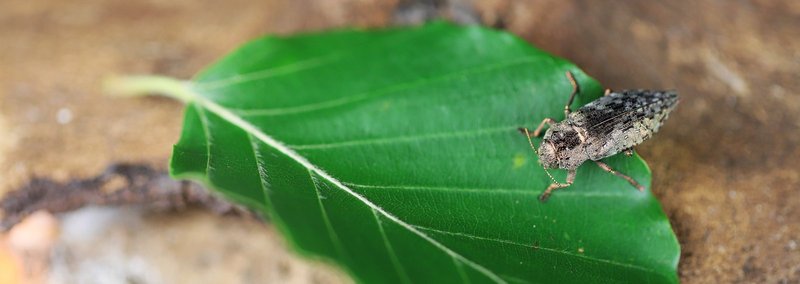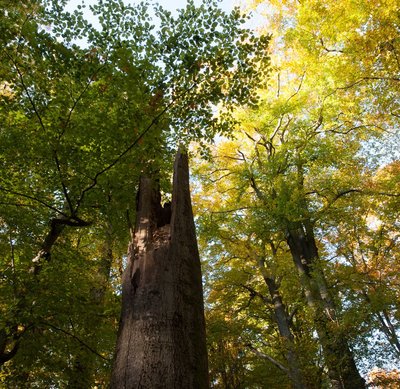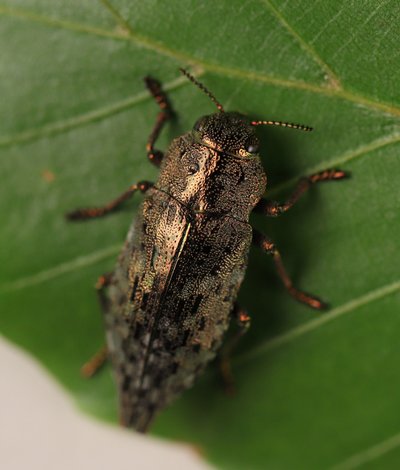At the beginning of August, a very rare beetle hatched in a forest conservation laboratory at the Bavarian State Institute of Forestry (LWF): the "Berlin jewel beetle" (Dicerca berolinensis), also known as the golden jewel beetle. It had developed in beech wood samples from the Steigerwald forest. The wood came from dead beech trees at the Ebrach forest climate station. "This significant find proves that valuable habitats and rare species are also being preserved in managed forests", says Dr. Peter Pröbstle, head of the forestry research institute.
The beetle in question was discovered by chance: After the drought year 2020, many old beech trees died at the forest climate station by Ebrach in the Steigerwald forest, and so the LWF carried out a study to investigate the influence of biotic and abiotic stress factors on these trees. In order to do so, they collected branch and trunk samples from damaged European beech (Fagus sylvatica). Back in Freising, scientists in the Department of Forest Conservation examined the samples and laid them out in net cages in order to observe the development of any deadwood insects that might be present. To their surprise, what emerged from the dead crown of a European beech was a jewel beetle that could be unequivocally identified as the rare golden jewel beetle Dicerca berolinensis. The last known discovery of this jewel beetle by scientists from the LWF had been more than 15 years earlier.
As a warmth-loving species, this beetle is dependent on the sun-exposed deadwood in the crowns of ailing beech trees. The red-listed species is also a beneficiary of climate change, as European beech are being weakened in some places by drought and heat. Old trees in particular, not being adaptable to changes in environmental conditions, are likely to show signs of being less healthy and of dieback.
The old-growth beech trees in the 180-year old mixed forest around Ebrach forest climate station (WKS) were also affected to a previously unheard of degree by dieback as a result of the extremely dry years from 2015 to 2020. The discovery of the golden jewel beetle does however also show that commercial forestry and nature protection do not have to be contradictory terms if the forests are managed in a near-natural way, and dying trees and deadwood are left in the forest. For many years now, the beech stands in Ebrach have been managed sustainably and according to near-natural forestry management principles, with minimum intervention.
The re-discovered beetle presents no risk to the forest, as it is rare and colonises dying trees. In the meantime, it has been re-released into its original habitat. Comprising some 15.000 species and 450 genera, jewel beetles are among the eight largest groups of beetle families in the animal world. In central Europa there are around 100 species of jewel beetle. Of these, 17 species live exclusively in, on and from oak, while just 3 species live on the beech; one of these three is the rare golden jewel beetle.




